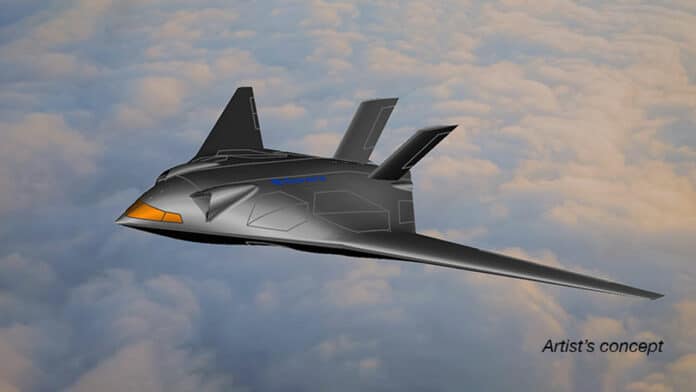Earlier this month, the Defense Advanced Research Projects Agency (DARPA) announced the four companies for the contract to design, build, and fly an X-Plane demonstrator for its Speed and Runway Independent Technologies (SPRINT) project.
The SPRINT X-Plane is intended as a proof-of-concept technology demonstrator, and its flight test program seeks to validate enabling technologies and integrated concepts that can be scaled to different-sized military aircraft.
The goal of the program is to provide these aircraft with the ability to cruise at speeds from 400 to 450 knots (740-830 km/h) at relevant altitudes between 15,000-30,000 feet (4,500-9,000 meters). It must have a payload capacity of at least 1,000 lb (454 kg). Additionally, it should be scalable for different mission types, have a flight time of 90 minutes or more, and a range of at least 230 miles (370 km).
Although the propulsion and control methods are not specified for the demonstrator aircraft, it must be able to perform high-speed cruising, hover in austere environments, and take off or land on unprepared surfaces such as parking lots, highways, or fields.
The agency selected Aurora Flight Sciences, Bell Textron, Northrop Grumman Aeronautic Systems, and Piasecki Aircraft Corporation to participate in Phase 1A of the SPRINT effort. Phase 1A is six months in duration and focuses on conceptual design and requirements/interface definition, as outlined in the initial contract announcement.
These teams will be down-selected over the next few months before the final winner is chosen to proceed with the construction of the aircraft. The flight is expected to take place in 2027, with the test program concluding in 2028.
This initial award funds work to reach a conceptual design review and include an executable option to continue to work through a preliminary design review.
It seems that Textron subsidiary Bell has one of the most advanced proposals for the SPRINT initiative. Their concept, called High-Speed Vertical Take-Off and Landing (HSVTOL), envisions an aircraft that looks like a tiltrotor while on the ground and in vertical flight mode. However, once it reaches sufficient speed, the rotor blades would fold back into a more aerodynamic profile, and the aircraft would fly like a fixed-wing jet.
Aurora, a Boeing subsidiary, is pursuing a fan-in-wing design based on a blended-wing-body airframe. Their design incorporates embedded engines and moderate sweep, with a vertical flight design comprised of embedded lift fans linked to the engines via mechanical drives.
Although we don’t know what Piasecki and Northrop Grumman are planning to bring to the table, there is a possibility that they might collaborate on a new blended-wing aircraft project that is super-efficient.
